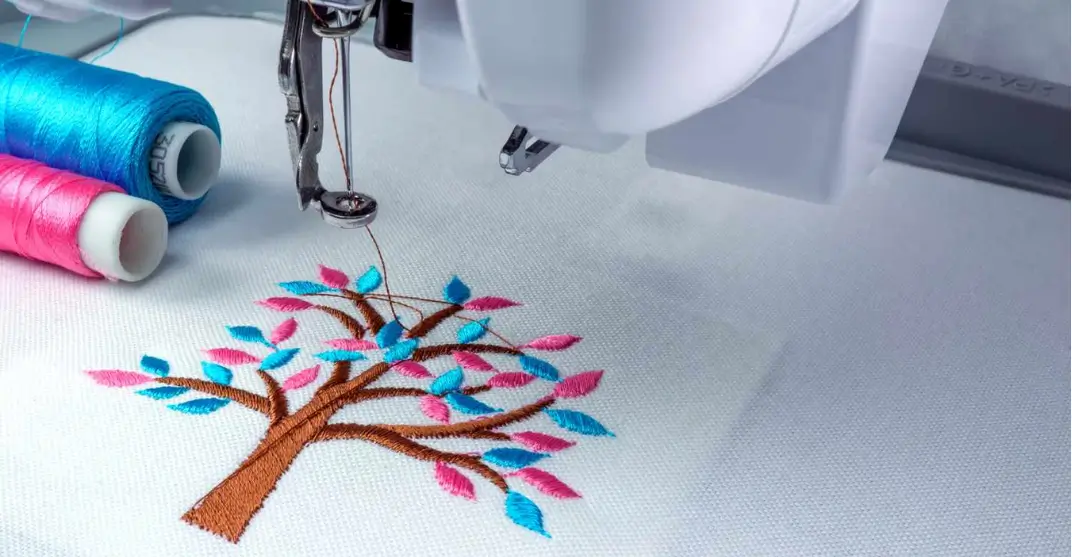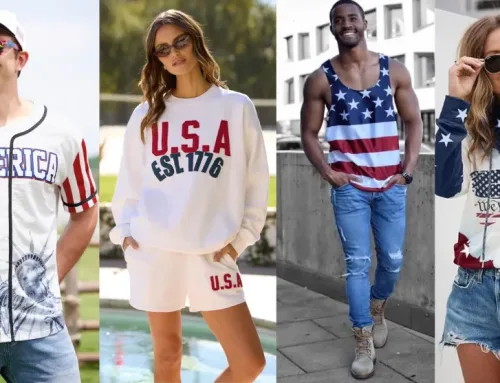
Embroidering clothes is a fun way to make them unique, stylish, and personal. Whether you want to add names, flowers, logos, or designs, embroidery gives clothing a creative touch. You can hand embroider or use a machine to stitch beautiful patterns on t-shirts, jackets, jeans, and hats.
In this guide, you will learn how to embroider on clothes, including step-by-step techniques, essential supplies, and expert tips to get the best results. Let’s begin!
What is Embroidery?
Embroidery is the art of stitching patterns, words, or images onto fabric using a needle and thread. People have been embroidering clothes for centuries to decorate and personalize their outfits.
There are two main ways to embroider:
- Hand Embroidery: Uses a needle and thread to stitch designs manually.
- Machine Embroidery: A sewing or embroidery machine is used for faster stitching.
Both methods create beautiful, long-lasting designs on different types of clothing.
Why Embroidery is a Great Way to Customize Clothing
-
Adds a Personal Touch
Embroidery allows you to customize clothing with names, words, and initials, making each piece unique. Whether it’s a monogrammed hoodie or a personalized tote bag, embroidery adds a distinct and stylish flair.
-
Makes Gifts Special
Handmade embroidery transforms ordinary gifts into cherished keepsakes. A custom-embroidered item shows thoughtfulness and effort, making it perfect for birthdays, holidays, or special occasions.
-
Revives Old Clothes
Give new life to plain or outdated clothing by adding intricate embroidered patterns. From floral designs on outerwear like jackets to creative motifs on wholesale t-shirts, embroidery enhances and refreshes your wardrobe.
-
Creates Professional Looks
Embroidered logos and designs elevate uniforms and branded apparel, giving them a polished, high-end appearance. It helps businesses create a strong identity while ensuring employees look professional.
-
Helps You Start a Business
Selling embroidered clothing is a profitable and creative business opportunity. With a high demand for personalized apparel, you can cater to businesses, fashion lovers, and gift seekers alike.
Essential Embroidery Supplies
Before learning how to embroider by hand on clothes or how to embroider by a machine, gather these tools:
1. Needles
- Hand Embroidery Needles—These have sharp tips for easy penetration through fabric, making them perfect for detailed hand-stitching. They come in various sizes to accommodate different thread types and fabric thicknesses.
- Machine Embroidery Needles— Specifically designed for embroidery machines, these needles ensure smooth, precise stitching. They reduce thread breakage and work well with different fabrics.
2. Embroidery Threads
- Cotton Threads— Made from natural fibers, these threads are soft, easy to work with, and ideal for traditional embroidery styles.
- Polyester Threads— Known for their strength and durability, polyester threads resist fading and are great for machine embroidery.
- Silk Threads—Luxurious and glossy, silk threads add a rich sheen to designs, making them perfect for elegant embroidery work.
3. Embroidery Hoops
Embroidery hoops hold the fabric tightly in place, preventing wrinkles and ensuring even stitches. They come in wooden, plastic, or metal varieties, with each offering different levels of grip and durability. Choose based on your comfort and project needs.
4. Fabric Choices
- Easy-to-stitch fabrics—cotton and felt are great choices for beginners because they are soft and allow smooth needlework.
- Tough Fabrics—Denim and leather require stronger needles and stabilizers to handle their thickness without damaging the fabric.
5. Extra Tools
- Fabric Markers—These markers traced designs onto fabric before stitching, ensuring accuracy in patterns.
- Stabilizers—Stabilizers are steady while embroidering, preventing stretching and distortion of stitches.
- Scissors—Sharp embroidery scissors are essential for cutting threads neatly and achieving clean finishing touches.
Choosing a Design for Your Embroidery
Before stitching, decide what design you want. Here are popular embroidery choices:
1. How to Embroider Letters on Clothes
- Use backstitch for thin letters.
- Use satin stitch for thick, bold letters.
2. How to Embroider Names on Clothes
- Write the name using a fabric marker before stitching.
- Use a running stitch or chain stitch to outline the letters.
3. How to Embroider Flowers on Clothes
- Use lazy daisy stitch for petals.
- Add a French knot in the center for detail.
4. How to Embroider a Logo on Clothes
- Trace the logo using embroidery transfer paper.
- Use satin stitch for filled areas and backstitch for outlines.
5. How to Embroider Designs on Clothes
- Keep designs simple for hand embroidery.
- Use complex designs for machine embroidery.
How to Embroider on Different Types of Clothing
Embroidering on clothing adds a unique and stylish touch, but different fabrics require specific techniques for the best results. Whether working with sweatshirts, headwear, or jackets, choosing the right needles, stabilizers, and thread is key.
1. How to Embroider on T-Shirts & Sweatshirts
- Use a stabilizer under stretchy fabric to prevent puckering.
- Choose soft threads like cotton or rayon to avoid skin irritation.
- Avoid pulling the thread too tight to maintain fabric flexibility.
Embroidery Idea:
Embroider initials on the chest for a personalized touch on sweatshirts and T-shirts.
2. How to Embroider on Denim (Jeans & Jackets)
- Use strong needles, such as size 90/14 or 100/16, to handle thick denim fabric.
- Choose bold thread colors like red, yellow, or white to create eye-catching designs.
- Use an embroidery hoop to keep stitches even and prevent fabric shifting.
Embroidery Idea:
Embroidered Jean Pockets: Stitch a small rose or initials on the back pocket for a stylish detail.
Custom Denim Jacket: Add a large embroidered design, like a dragon or name, on the back for a bold statement.
3. How to Embroider on Hats & Caps
- Use a curved hat hoop or cap frame to stabilize the fabric for precise stitching.
- Keep stitches small and compact to prevent wrinkles and distortion.
- Use bright thread colors like neon, gold, or silver to make the design pop.
Embroidery Idea:
Logo Embroidery on Caps—Add a small embroidered logo on the front panel for a professional look.
Custom Name or Initials—Embroider initials or a short phrase on the side for a personalized touch.
Step-by-Step Guide: How to Embroider on Clothes
Draw your design on the fabric, secure it in an embroidery hoop, and start stitching with techniques like hand embroidery or machine embroidery.
How to Hand Embroider on Clothes
- Draw your design on the fabric with a fabric marker.
- Place the fabric inside an embroidery hoop.
- Thread the needle and tie a knot at the end.
- Start stitching with a backstitch, satin stitch, or French knots.
- Secure the stitches by tying a knot at the back.
How to Embroider with a Machine
- Select a design on your embroidery machine.
- Attach a stabilizer under the fabric.
- Place the fabric in the machine embroidery hoop.
- Start the machine and let it stitch automatically.
- Trim any extra threads after stitching.
Basic Embroidery Stitches
1. Backstitch
- Best for letters and outlines.
- Creates a clean, smooth line.
2. Satin Stitch
- Fills letters, shapes, and logos.
- Creates bold and solid colors.
3. French Knots
- Used for small dots and flower centers.
- Adds texture and depth.
4. Chain Stitch
- Creates a rope-like effect.
- Good for decorative designs.
Common Mistakes & How to Fix Them
1. Uneven Stitching
Use an embroidery hoop to keep the fabric stable and prevent shifting. Follow the drawn lines carefully to maintain consistency in stitch size and direction.
2. Loose or Tight Stitches
Keep thread tension even by gently pulling the thread without over-tightening. Avoid pulling stitches too hard or leaving them too loose to ensure a clean, balanced look.
3. Fabric Puckering
Use a stabilizer, especially for stretchy fabrics, to prevent distortion. Stitch evenly and avoid excessive pulling to keep the fabric smooth and wrinkle-free.
Care Tips for Embroidered Clothing
- Hand wash embroidered clothes gently to prevent fraying and preserve the stitches.
- Use mild detergent to protect the embroidery threads from fading or weakening.
- Iron inside out on low heat to avoid direct contact with the embroidery and prevent damage.
- Do not bleach embroidered fabrics, as harsh chemicals can weaken the threads and fade the design.
The Best Place to Buy Embroidery Services
If you want bulk embroidery supplies or customized embroidery services, check out The Apparel Factory. We offer:
- Bulk discounts on embroidery threads, stabilizers, and needles.
- Wholesale embroidery services for businesses and brands.
- Customization services like screen printing, applique, and laser etching.
- Heat transfer and embroidery printing for bulk orders.
We provide high-quality embroidery solutions at affordable prices. Whether you need custom logos on uniforms or personalized gifts, they have you covered!
Conclusion
Now you know how to embroider on clothes by hand or with a machine! Whether you want to embroider names, letters, flowers, words, or logos, embroidery adds a unique touch to your clothing.
Start by practicing simple designs on t-shirts, jackets, or hats, or let the experts handle it for you. Pick a design and start stitching today with us!
For more creative ideas, check out our blogs on how to embroider a sweatshirt, and boost your brand identity with custom-embroidered hats.
Published on:
February 13, 2025




